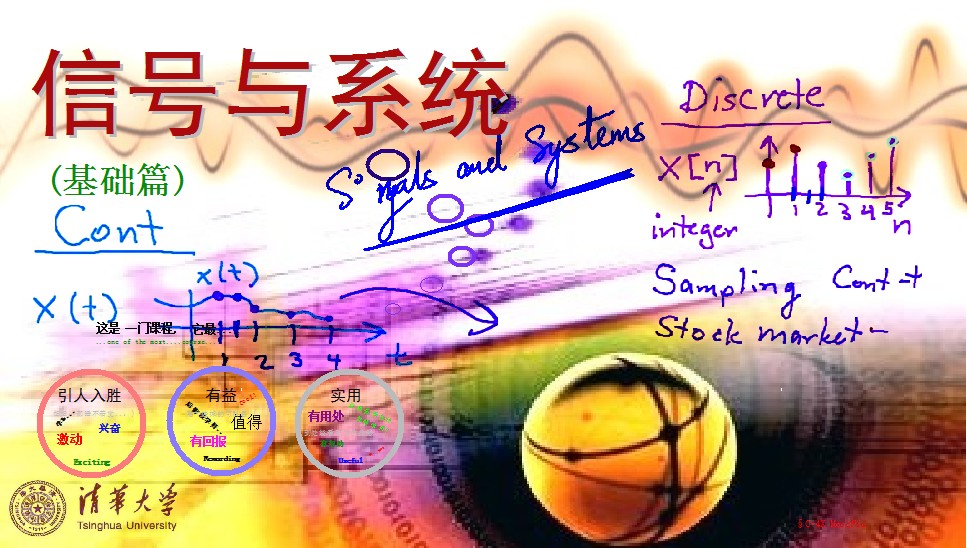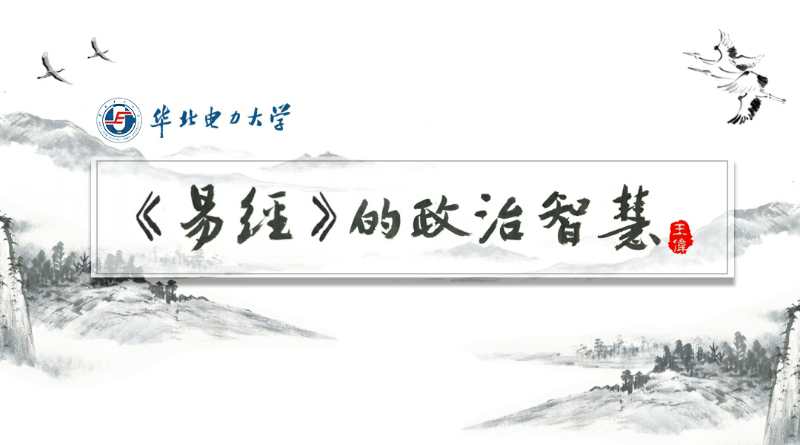
当前课程知识点:Overview of China > 第五章 筑梦中国 Building Dreams in China > 5.1 源远流长的古代中外交流 Ancient exchanges between China and foreign countries > 5.1源远流长的古代中外交流 Ancient exchanges between China and foreign countries
返回《Overview of China》慕课在线视频课程列表
朋友 您好 欢迎您走进中国
Hello! My friends , Welcome to the Overview of China
了解更多关于中国的知识
and know more about China.
今天我们一起来了解波澜壮阔的中外交流
Today we are going to learn magnificent Sino-foreign communication
首先让我们一起领略
Firstly let’s appreciate
源远流长的古代中外交流的情况
the long-standing ancient Sino-foreign communication
作为农业文明的大国
As a great country of agricultural civilization,
中国自古以来
since ancient times, China has had
就同周边文明有着各种各样的文化交流
various cultural exchanges with surrounding civilizations.
在这其中有暴力的战争
Among them, there were violent wars,
也有和平的商贸 文化交流
peaceful commerce and cultural exchanges.
其中 璀璨辉煌的对外物质文化交流
During which, the brilliant tangible cultural exchange
尤其引人瞩目
was especially impressive.
丝绸 茶叶 瓷器 以及四大发明等
Silk, tea, porcelain, and the Four Great Inventions
通过陆上和海上丝绸之路远销欧洲
spread to Europe via the Overland and Maritime Silk Road.
当然 在制度 精神层面的中外交流也同样精彩
Of course, the institutional and spiritual exchanges were also wonderful.
佛教 伊斯兰教文明传入中国
Buddhism and Islam were introduced into China.
甚至基督教文明也曾在中国境内一度 寺满百城
Even Christian churches was once full of hundreds of cities in China.
中国的儒家学说也传播到朝鲜半岛 日本 越南
Chinese Confucianism also spread to Korean Peninsula, Japan and Vietnam,
以及近代以来新加坡与东南亚华人聚居地区
and modern Chinese inhabited areas in Singapore and Southeast Asia.
早在先秦时期
As early as the pre-Qin period,
中华文明已经与周边文明有着各种文化上的交流
Chinese civilization has had cultural exchanges with its neighbors.
到了秦汉时期
During the Qin and Han Dynasties,
这种文化交往就更加频繁
cultural exchanges became more frequent.
公元前138年
In 138 BC,
汉武帝为了北击匈奴
in order to against the Huns, Emperor Wu of Han Dynasty,
派遣张骞出使西域
sent Zhang Qian as an ambassador to the Western Regions,
开辟了丝绸之路
and opened up the Silk Road.
西域的各种物产
Different special local products of the Western Regions,
如苜蓿 葡萄 石榴等传入中原地区
such as alfalfa, grapes, pomegranates were introduced to the Central Plains.
中原地区的丝绸 茶叶等
Silk, tea, etc of the Central Plains
也源源不断地销往中亚和欧洲地区
were spread to the Central Asia and Europe continuously.
东汉末年
In the late Eastern Han Dynasty,
群雄并起 三国分立
Three Kingdoms had fragmented for a long time.
征战不已 民不聊生
People couldn’t have peaceful life because of endless wars.
魏晋南北朝时期频繁的战争
Frequent wars during the Wei, Jin, Southern and Northern Dynasties,
让人们纷纷寻求宗教的安慰
made people seek comfort from religions.
除了本土的道教兴起
In addition to the rise of native Taoism,
外来的佛教也兴盛一时
foreign Buddhism also flourished once.
南朝四百八十寺
“Innumerable temples in the Southern Dynasty,
多少楼台烟雨中
most of them were standing in the misty rain.”
这一时期
During this period,
不仅有大量的印度僧人来到中原地区
not only a large number of Indian monks came to China,
而且也有很多中国僧人西行求佛法
and there were also many Chinese monks going west to seek Dharma.
在这其中东晋的法显就是最著名的一位
Fa Xian of the Eastern Jin Dynasty was the most famous one.
他从陆上丝绸之路到达印度
He arrived in India by the overland Silk Road,
又从海路回到中国
and back to China by sea.
著有 佛国记 一书
He wrote his book named A Record of Buddhistic Kingdoms.
印度僧人达摩东渡中国
The Indian monk Bodhidharma traveled east to China,
在少林寺修行传法
practiced and preached in Shaolin Temple,
开创了禅宗
and started the Chan sect
因此 少林寺也被称为禅宗祖庭
for this reason the Shaolin Temple is also called Zen Ancestral Temple.
隋唐时期
During the Sui and Tang Dynasties,
中国国力强盛 文化开放
The national strength was strong and the culture was opened up to the world.
中外文化交流蓬勃发展
Cultural exchanges between China and other countries have flourished.
阿拉伯商人 波斯商人沿着丝绸之路东来
Arab and Persian merchants came along the Silk Road,
在长安城经商贸易
did business trade in Chang’an.
日本和朝鲜的遣唐使纷纷来到中国
Envoys from Japan and Korea came to China,
学习唐朝的文化和制度
learned the culture and system of the Tang Dynasty.
他们也带来了高丽乐
They also brought the Koryo music,
深刻影响了中国的音乐文化
which deeply influenced Chinese music culture.
像日本的遣唐使阿倍仲麻吕
Japanese envoys such as Abeno Nakamaro,
吉备真备和高僧空海等
Kibi Makibi and Great Master Kukai,etc.
他们将唐朝的典章制度带回日本
they brought the laws and regulations of the Tang Dynasty back to Japan
深刻影响了日本文化
and deeply influenced Japanese culture.
唐朝时期也有很多中国人
During the Tang Dynasty, many Chinese people made outstanding contributions
为中外文化交流做出突出贡献
to the cultural exchanges between China and foreign countries.
玄奘西行天竺求法
Xuan Zang went west to explore the dharma,
带回来很多佛经
brought back many Buddhist scriptures,
他还著有 大唐西域记
and wrote the book Records on the Western Regions of the Tang Dynasty.
成为研究此一时期西域与印度最宝贵的资料
It was the most valuable material for studying the Western Regions and India in that period.
鉴真不畏艰险东渡日本弘法
Jianzhen braved the dangers to travel east to Japan to carry forward the dharma
最后在日本去世
and died in Japan.
宋元时期
During the Song and Yuan Dynasties,
中外文化交流中
in cultural exchanges between China and foreign countries,
海上丝绸之路的文化交流蓬勃发展
cultural exchanges along the maritime Silk Road have flourished.
意大利人马可 波罗来到元大都
The Italian Marco Polo came to the capital city of the Yuan Dynasty.
在中国游历17年
He had been living in China for about 17 years,
还曾任元朝的官吏
and was also an official in the Yuan Dynasty.
他的经历被写成了 马可•波罗游记
His experiences were turned into The Travels of Marco Polo,
激发了西方人对中国的狂热向往
which stimulated westerners' enthusiasm for China.
明朝时
During the Ming Dynasty,
利玛窦 汤若望等欧洲传教士
Matteo Ricci, Johann Adam Schall von Bell and other European missionaries
先后来华
came to China successively,
与徐光启等合作开展翻译活动
cooperated with Xu Guangqi to carry out translation activities.
把欧洲的天文 数学 地理等著作介绍到中国
They introduced European works on astronomy, mathematics and geography to China,
同时把中国的 大学 论语 等典籍
and introduced The Great Learning, The Analects of Confucius
介绍到欧洲
and other Chinese classics to Europe.
欧洲学者称之为 一次相互的启蒙
European scholars called it "a mutual enlightenment".
1405—1433年
During 1405-1433,
明成祖命郑和率领庞大船队七下西洋
Ming Emperor Cheng Zu ordered Zheng He to lead a huge fleet to the Western Seas seven times.
访问了30多个在西太平洋和印度洋的国家和地区
Visited more than 30 countries and regions in the Western Pacific and Indian Oceans,
加深了中国同东南亚 东非的友好关系
deepened China's friendly relations with southeast Asia and East Africa.
但在明朝中后期
But in the middle and late Ming Dynasty,
随着东南沿海倭患盛行
with prevalence of pirates in the southeast coastal area,
明政府开始实行海禁政策
the Ming government began the implement of the policy of banning the sea.
到了清代 为了巩固统治
To the Qing Dynasty, in order to consolidate the govern,
实行闭关锁国政策
the policy of isolation was put it effect
让中外交流仅限于广州一地
which made the Sino-foreign exchanges limited to Guangzhou.
中外交流受到了严重的制约
Exchanges between China and foreign countries have been severely restricted.
好 关于古代中国的中外交流情况我们就先介绍到这里 谢谢
Ok! That's all for the Chinese and foreign exchanges in ancient China. Thank you!
-1.1 初识中国 First acquaintance of China
--1.1 初识中国 First acquaintance of China
-1.2 人文中国 Humanistic China
-1.3 美丽中国 Beautiful China
-1.4 绿色中国 Green China
-1.5 民俗中国 Folklore China
-小测验 Quiz
-2.1 畅行中国 Unimpeded China
--2.1.1 中国交通方式 China's mode of transportation
--2.1.2 中国著名人文景观 Famous cultural landscape in China
--2.1.3 中国著名自然景观 Famous natural landscape in China
-2.2 乐居中国 Happy living in China
--2.2.1 中国传统官式建筑 Traditional Chinese official architecture
--2.2.2 中国传统民居 Traditional Chinese houses
--2.2.3 中国现代城镇的发展 The development of modern towns in China
-2.3 食在中国 Eating in China
-2.4 穿在中国 Wear in China
-2.5 医在中国 Medicine in China
-小测验 Quiz
-3.1 中国历史 Chinese History
--3.1.1.走向大一统的中华文明 Towards the unification of Chinese civilization
--3.1.2 多民族融合的封建帝国 A multi-ethnic feudal empire
--3.1.3 日新月异的和平中国 Peaceful China changing with each passing day
--小测验 Quiz
-3.2 中国科技 China‘s Science and Technology
--3.2.1 中国古代四大发明 Four great inventions in ancient China
--3.2.2 中国古代数学和天文学 Ancient Chinese mathematical astronomy
--3.2.3 古代青铜器和农业科技 Ancient bronzes and agricultural technology
--3.2.4 中国新四大发明 Four new inventions in China
--3.2.5 国防与民生科技 National defense and people's Livelihood Science and technology
--3.2.6 中国航空航天 China Aerospace
--小测验Quiz
-3.3 中国经济 China's Economy
--3.3.1 中国古代农业和手工业 Ancient Chinese agriculture and handicraft industry
--3.3.2 中国古代商业 Ancient Chinese Commerce
--3.3.3 中国现代经济政策和体制 China's modern economic policy and system
--3.3.4 中国经济发展的成就 Achievements in China's economic development
--3.3.5 中国经济发展的新趋势 The new trend of China's economic development
--小测验Quiz
-3.4 中国教育 Education in China
--3.4.1 古代哲学和教育思想 Ancient philosophy and educational thought
--3.4.2 古代学校教育 Ancient school education
--3.4.3 科举制度 Imperial examination system
--3.4.4 扫盲运动与高考 Literacy campaign and college entrance examination
--3.4.5 中国现代教育体系 China's modern education system
--3.4.6 国际教育交流与合作 International educational exchange and cooperation
--小测验Quiz
-4.1 文学欣赏 Literary Appreciation
--4.1.1 《诗经》和《离骚》Book of Songs and Li Sao
--4.1.2 诸子散文 Philosophical Prose
--4.1.3 唐诗宋词 Chinese Tangsong Poetics
--4.1.4 四大名著 Four Masterpieces
--4.1.5 中国现代文学 Modern Chinese Literature
--4.1.6 中国当代文学 Contemporary Chinese Literature
--小测验 Quiz
-4.2 音乐欣赏 Music Appreciation
--4.2.1 中国传统音乐与乐器 Traditional Chinese Music and Musical Instruments
--4.2.2 中国古典十大名曲 Ten Famous Classical Chinese Songs
--4.2.3 五彩缤纷的现代音乐 Colorful Modern Music
--小测验 Quiz
-4.3 戏曲欣赏 Opera Appreciation
--4.3.2 豫剧和其他地方戏 Henan Opera and Other Local Operas
--4.3.3 皮影戏和样板戏 Shadow Play and Model Play
--小测验 Quiz
-4.4 书画欣赏 Appreciation of Painting and Calligraphy
--4.4.1 文房四宝及书体 Four Treasures of Study and Calligraphy Style
--4.4.2 书法艺术习成及名家名作 Calligraphy and Masterpieces
--4.4.3 中国画的工具及分类 Tools and Classification of Chinese Painting
--4.4.4 中国绘画名家名作 Famous Works of Chinese Painters
--4.4.5 中国书画艺术思想 The artistic Thought of Chinese Painting and Calligraphy
--小测验 Quiz
-4.5 影视欣赏 Film Appreciation
--4.5.3 20世纪90年代至今中国电影欣赏 Chinese film appreciation since 1990s
--小测验 Quiz
-4.6 武术欣赏 Chinese Martial Arts Appreciation
--4.6.1 中国武术的源流与发展 The Origin and Development of Chinese Martial Arts
--4.6.2 中国武术流派 Chinese Martial Arts schools
--4.6.3 十八般武器 18 Weapons of Martial Arts
--4.6.4 中国武术文化欣赏 Appreciation of Chinese Martial Arts Culture
--小测验 Quiz
-5.1 源远流长的古代中外交流 Ancient exchanges between China and foreign countries
--5.1源远流长的古代中外交流 Ancient exchanges between China and foreign countries
-5.2 丰富多彩的现代中外交流 Rich and colorful modern exchanges between China and foreign countries
--5.2 丰富多彩的现代中外交流 Rich and colorful modern exchanges between China and foreign countries
-小测验 Quiz
-期末考试 Final Examination
--期末考试 Final Examination

